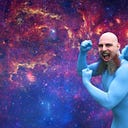What Was It Like When The Universe Was Inflating?
Cosmic inflation is what happened before, and set up, the Big Bang. Here’s what it’s like to live in an inflating Universe.
Our Universe today is full of matter and radiation, and can be observed by us through a variety of means. Atoms have clumped and clustered together due to billions of years of gravitation. This has formed a great cosmic web on the largest scales, with clusters of galaxies, individual galaxies, clouds of gas, stars, planets, and more on smaller scales. Through it all, the Universe has been expanding and cooling, something it’s been doing since the earliest moments of the hot Big Bang.
But the Big Bang wasn’t the very beginning of the Universe. Before that, there was a period known as cosmic inflation, which came earlier and set up the hot Big Bang. While living in an expanding, cooling Universe is difficult to intuit, inflation paints an entirely different picture. Here’s what it would be like to live in an inflating Universe.
Imagine that you were a particle, located somewhere in the fabric of spacetime. A short distance away, another…

